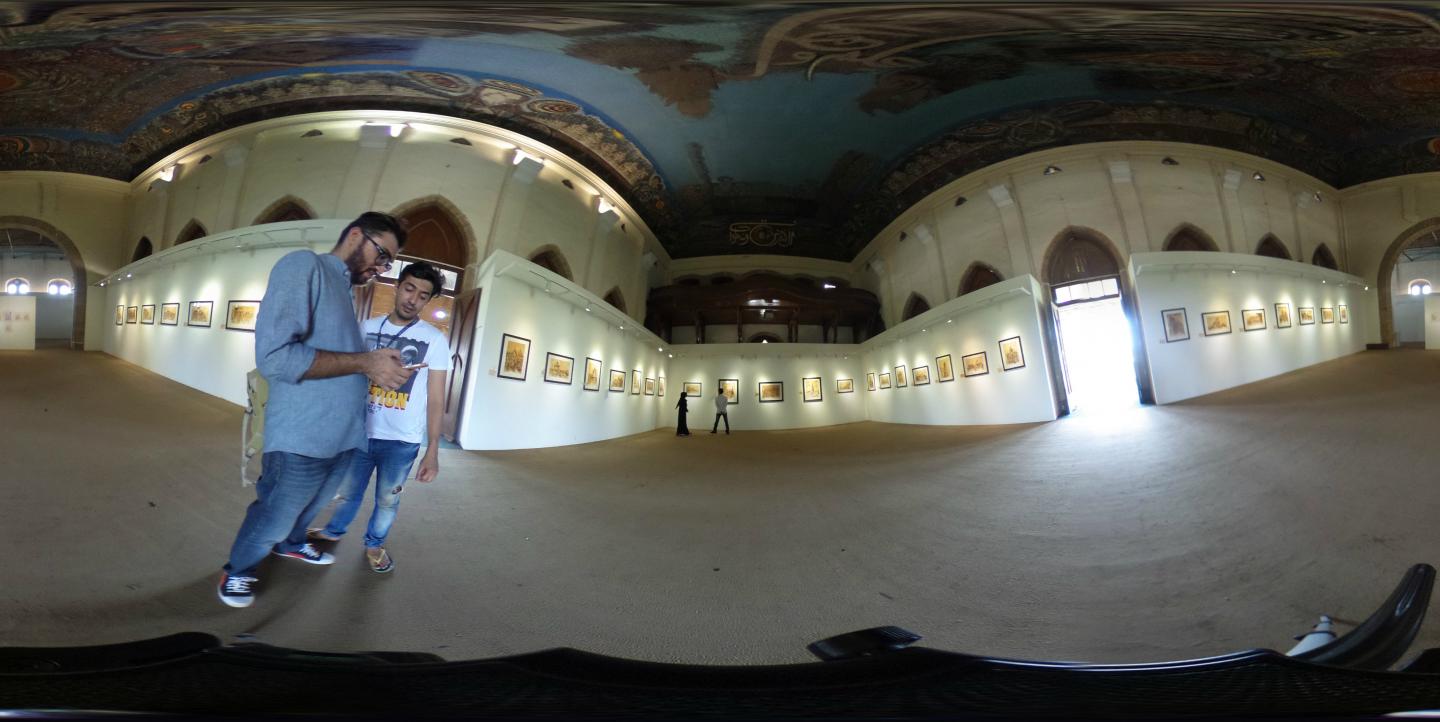This month, we made the leap into 360° video, shooting the first such news video in Pakistan. As an ICFJ Knight Fellow, I worked in collaboration with The Express Tribune in Karachi to produce this groundbreaking video.
Much has already been said about virtual reality and 360° video in the news industry. Instead of covering the same ground, I will explain how we did it and what you should consider if you’re about to shoot your own 360° video.
Why did we do this? Because 360° video is a visual storytelling tool with massive potential — both for planned projects and for live and breaking news. It provides viewers with a more in-depth, immersive experience, giving a first-person perspective on your story.
For the first story, we planned a series on heritage sites in Karachi, Pakistan’s biggest city. The city's hundreds of heritage sites are rarely visited. And so we launched the series with a video of Frere Hall, once a town hall and theater and now an art gallery.
Our video went from a tour of the site to one that showed its dismal state today. We could show a lot more with the video's view. Anyone could see the junk collecting in the main gallery, the state of the stairwell with bird droppings and broken windows, which we couldn’t have shown as well if this was just a short video.
To our surprise, the technical side of shooting the video wasn’t an issue. Gaining access to the site was the biggest hindrance, which we managed to overcome in time.
Don’t overspend on equipment if you’re just starting
If you’re just starting out in 360° video, don’t splurge on high-end rigs that cost US$5,000 upward. There are plenty of options well below the US$1,000 mark that can shoot decent 360° video and will even stitch the video for you before exporting to your computer. More expensive rigs can shoot up to 4K video, something to consider depending on what platform you are shooting for. Lower and mid-budget cameras also save on post-production costs, as stitching software can be expensive.
You can look at Kodak, Giroptic, Ricoh or VSN for what suits your budget.
Another thing to remember: the device supporting your camera will always appear in the video. To ensure not much shows, get a tripod with a smaller camera base, like a tripod stand that supports cellphones. I wouldn't recommend adding an image or text where the tripod stand shows. It distracts the viewers.
Shooting the video
Know what you’re shooting and what you want to show. Some 360° shots can be tricky if you’re trying to show an object or a location. Use your camera’s mobile app to plan your shot. This is also helpful in figuring out the front shot (which makes it easy to edit the video later).
Stay out of the frame if you’re not the one telling the story or narrating it. You want a clear shot, not one of you lurking in the background.
Don’t talk anywhere near the camera, even if you’re hidden from view. This is important if you don’t plan on recording background audio separately. I recommend using external audio for background audio and for narration. Most cameras have terrible built-in mics.
Editing
Different cameras will handle videos differently. The camera we used stitched the video for us and converted it ready for YouTube and Facebook through its own software. But we had to edit it, add audio and titles. We used Final Cut Pro to edit the video and then encoded it for 360° viewing with YouTube's 360° Metadata app.
Titles work great, but avoid subtitles or any other text. Large text looks good, but also covers most of your shot as the video is stretched in post-production. Smaller text isn’t readable at all because of this. Use clear narrations instead of subtitles.
Publishing: Picking a platform
Choosing where to upload the video makes a difference. Facebook and YouTube both support mobile and work great.
Google Cardboard is a great viewing tool, but has no iOS support yet. That is something you should have in mind before assuming your viewers will have a device on which they can watch the video.
Despite very clear instructions in the video from Facebook and YouTube, don’t assume your viewers will know how to watch the video. A written note in the video description will help.
Like I mentioned above, Cardboard is a great, inexpensive tool. Guide your viewers on how to use Cardboard as well. That is, focus on the central point till the blurriness goes away, then continue watching for a smooth experience.
YouTube has also recently started rolling out support for live-streaming 360° videos. This is a game changer for news teams all over the world.
Both virtual reality and 360° video are great visual storytelling tools. The New York Times, USA Today and the BBC, among others, have already shown us what potential there is for 360° video, with some even launching their own apps. The Guardian has done a great story using virtual reality.
Now is a good time to join them and make this leap.
Shaheryar Popalzai is a digital journalist based in Pakistan and a co-founder of Hacks/Hackers Pakistan. Learn more about his work as an ICFJ Knight Fellow here.
Images courtesy of Shaheryar Popalzai.

